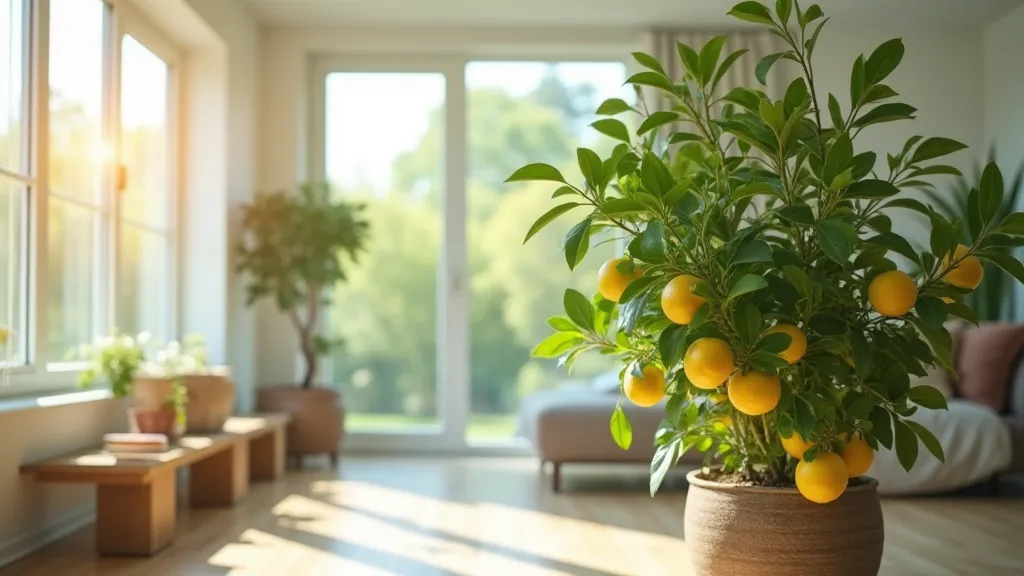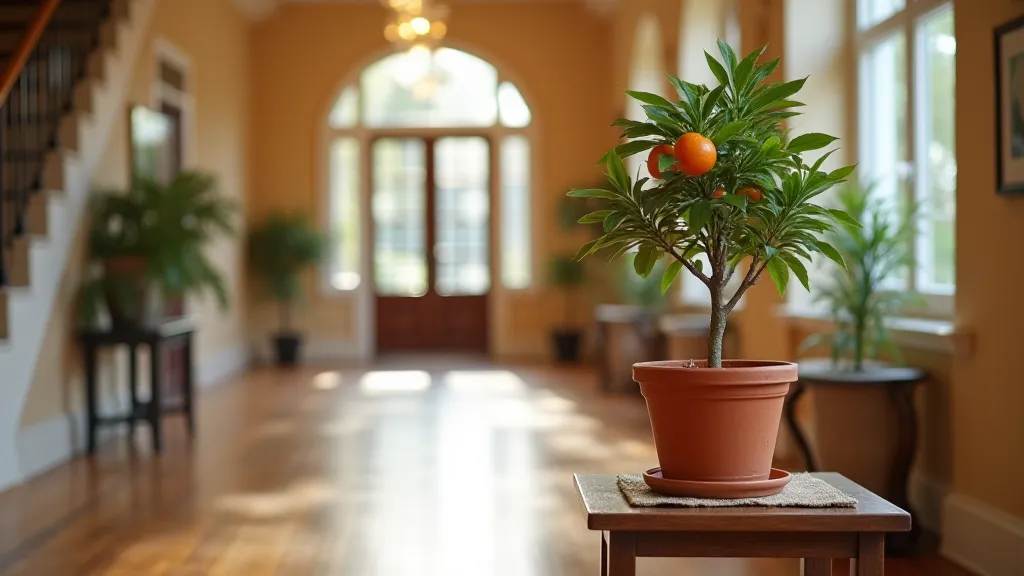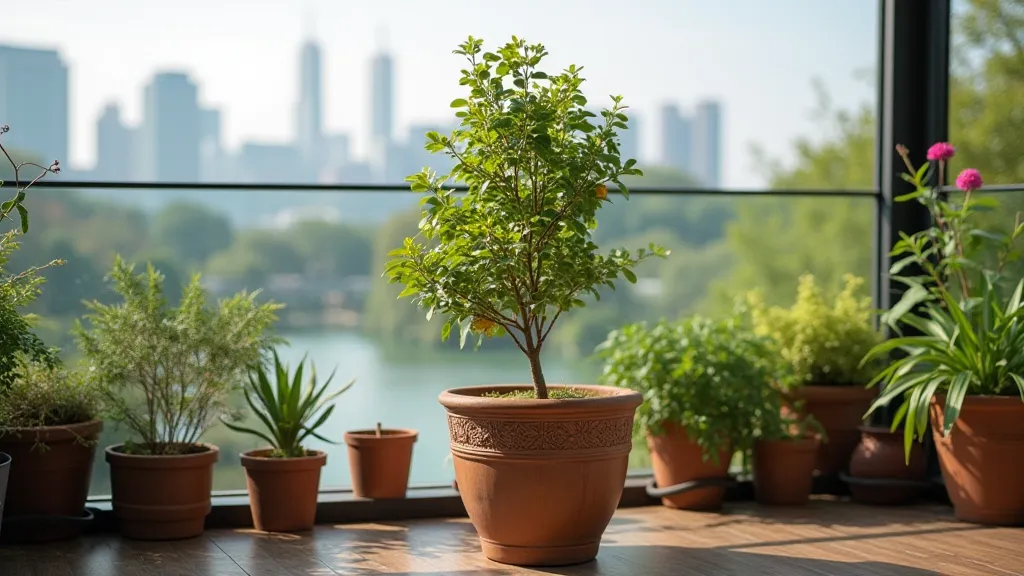Best Locations for Indoor Citrus: Maximizing Sunlight & Aesthetics
Bringing the sunshine and fragrance of citrus indoors is a delightful experience. But simply potting a dwarf citrus tree isn’t enough for success; choosing the right location is absolutely crucial. This guide explores the best places to position your dwarf citrus, balancing their need for sunlight and warmth with your interior design goals. Let's create a thriving and beautiful indoor citrus haven!
The Sunlight Imperative: Finding the Brightest Spot
Dwarf citrus trees are sun-loving plants, accustomed to intense sunlight. They require a significant amount of light – ideally 6-8 hours of direct sunlight daily. Insufficient light results in weak growth, poor fruiting (or no fruiting at all!), and leaf drop. Let’s look at the best options:
- South-Facing Windows: This is usually the gold standard. A south-facing window provides the most direct sunlight throughout the day. Be aware that even with a south-facing window, you might need supplemental lighting, especially during winter months.
- West-Facing Windows: These windows receive intense afternoon sun, which can be beneficial for citrus. Be mindful of overheating in the summer, and consider shading the tree during the hottest hours.
- East-Facing Windows: These offer gentler morning sun. While not as intense as south or west exposures, they can be adequate, especially if supplemented with grow lights.
- North-Facing Windows: Generally, avoid north-facing windows as they receive very little direct sunlight and are unsuitable for dwarf citrus trees.
Pro Tip: Rotate your citrus tree regularly (about 180 degrees every week) to ensure even growth on all sides. This prevents the tree from leaning excessively towards the light source.

Temperature and Airflow Considerations
Beyond sunlight, temperature plays a vital role. Dwarf citrus trees prefer daytime temperatures between 70-85°F (21-29°C) and slightly cooler nighttime temperatures. Avoid placing them near drafts from windows or heating vents. Consistent airflow is also important – it helps prevent fungal diseases. A gentle breeze is ideal; a stagnant, humid environment is a recipe for trouble. Understanding the full spectrum of benefits from growing these wonderful plants can be incredibly rewarding – explore the benefits of growing dwarf citrus indoors for more information.
Integrating Citrus into Your Interior Design
Your dwarf citrus tree can be more than just a plant; it can be a beautiful design element! Here are some ideas for incorporating your tree into your home:
- Statement Piece: A well-maintained citrus tree can be a stunning focal point in a living room or sunroom. Choose a decorative pot that complements your decor.
- Kitchen Herb Garden Alternative: Citrus trees offer a fragrant and visually appealing substitute for a traditional herb garden.
- Corner Accent: Tucked into a corner, a citrus tree can soften the space and add a touch of nature.
- Layered Displays: Combine your citrus tree with other indoor plants to create a layered, lush display.

Dealing with Limited Space: Vertical Gardening Options
If space is tight, consider these vertical gardening solutions:
- Plant Stands: Elevate your tree on a stylish plant stand to maximize floor space and add visual interest.
- Hanging Baskets (with caution): While possible, ensure the basket is incredibly sturdy and can support the mature weight of a citrus tree. This is best for very small dwarf varieties.
Seasonal Adjustments and Problem Solving
Remember that your tree’s needs will change with the seasons. During winter, you may need to supplement with grow lights, reduce watering, and protect the tree from cold drafts. Often, issues arise from improper soil conditions; you can learn more about choosing the best soil for indoor dwarf citrus trees to give your tree the foundation it needs to thrive.
Citrus trees can sometimes suffer from propagation issues. If you find yourself wanting to expand your collection, explore propagating dwarf citrus trees to learn more about how to multiply your successes.
If you notice yellowing leaves, leaf drop, or stunted growth, it's likely due to inadequate light, temperature, or watering. Careful observation and adjustments are key to success. Furthermore, maintaining the health of your dwarf citrus involves consistent pruning. Learn how to prune dwarf citrus trees to encourage robust growth and bountiful harvests.

Creating the perfect environment for your indoor citrus requires a holistic approach. Consider factors such as humidity, fertilization schedules, and pest control. Regularly inspect your tree for signs of pests or diseases, and address any issues promptly. Providing your tree with the right care and attention will reward you with years of fragrant blossoms and delicious fruit. Experiment with different locations and techniques to discover what works best for your specific tree and your home environment. With a little planning and attention, you can create a thriving and beautiful indoor citrus garden, bringing the taste and fragrance of summer into your home year-round!
For more detailed information, consider delving into the specifics of each stage of your citrus tree’s life, from seedling to mature fruiting plant. Researching the particular variety you're growing can also provide valuable insights into its unique needs and preferences. Ultimately, cultivating a thriving indoor citrus garden is a journey of learning and discovery, filled with both challenges and rewards. Enjoy the process, and revel in the beauty and bounty that your efforts bring.





